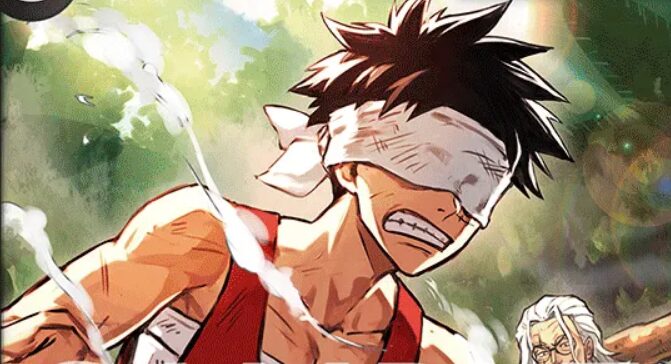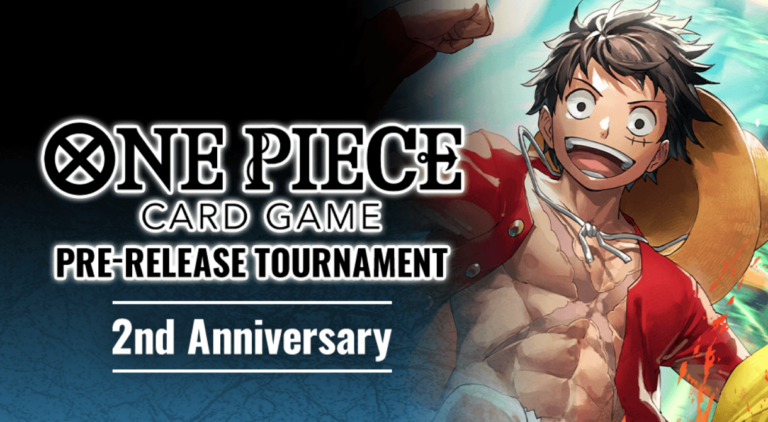Table of Contents
Heya everyone! This article is geared towards beginner OPTCG players, but even seasoned players might discover some useful insights here! The One Piece card game seems basic at first glance, but there are a lot of deeper skills that we only learn over time and practice.
There are multiple ways to improve at card games: putting in a lot of time and naturally improving as you figure out your mistakes, watching gameplay of high-skill players, getting a one-on-one coaching session, and reading my guides!
In this article, I'll share tips to improve your gameplay and become a more consistent player.
1- Attack before Develop

A common mistake for new players is to develop Characters on the board first, then use the remaining Don to boost their attacks. While there are exceptions, such as playing EB01-061-mr2bonkurei-bentham first to benefit from the Active Don he provides, it's generally better to attack before developing. Here's why:
Attacking first keeps the opponent on edge, not knowing what your upcoming play will be. This could force them to use up Counter cards out of fear of a certain Rush attacker or if we use our remaining Don on another attacker, potentially setting up a lethal attack.
Attacking first could get rid of any Trigger cards capable of removing a valuable Character. For example, if we develop a Character and then attack their Leader, we could end up triggering cards like OP06-101-o-nami, EB01-059-kingdom-come, or OP06-058-gravity-blade-raging-tiger and getting our developed Character removed from play. This depends on the deck we're playing against and what they're capable of, Yellow being notorious for its Trigger abilities.
To make this easier for us, take a moment to plan your plays on a specific turn and determine how much Don you'll need to play your cards. From there, start using any remaining Don to boost your attacks, commit them, and then play your cards.
2- When to Counter When to Take Damage

Understanding when to Counter certain attacks is an important skill that helps you in the long run. This is a difficult skill to master, but over time, you'll find your late games are going smoother, just by understanding the correct way to shut down an attack.
Countering correctly will save you resources and can make it difficult for opponents to close out games in the later stages. Life Cards are a resource we can take advantage of, we could be missing a certain piece to set up our game plan, and taking that 1 hit could find us a needed card.
If your opponent is attacking for an 8,000 Power attack early into the game, we most likely want to just take it instead of committing two valuable +2,000 Counters or a +2000 and two +1,000 Counters. Those Counter cards can find use in the later game to shut down lower-power attacks. In the mid-game, most players can't afford to commit too many Don cards for their attacks as they're also trying to develop on the board. This means they'll likely attack for 5,000 Power attacks, which are easier to Counter with a +1,000 Counter.
As the game approaches its late stages, we'll find ourselves with more Life Cards and Counter Resources since we prioritized countering the lower power attacks over 1 or 2 heavy attacks.
Ideally, we want to stay at 2 Life Cards, but dropping to 0 Life Cards is the danger zone. Having at least 1 Life Card will force opponents to divide their Don between two attackers, making it easier for you to counter out of one of them. Falling to 0 Life Cards means all opponent has to do is attach all their Don on one attacker and go for the attack, if you don't have a blocker, it'll be almost impossible to Counter out of that attack.
3- How to Don Attack

We're attacking for multiple purposes: damaging Leader, KOing a rested Character, and forcing Counter cards.
It's not ideal to put all your Don into attacking, as you'll still want to develop on the board and keep up with the opponent. We need to identify how many Don cards we need for board development and the rest can be used for Power boosts.
Prioritize removing rested Characters over attacking the Leader if their Leader is still healthy. Any Don Power boost should go to removing that Character over going for their Leader. If our attacker is the same Power to that Character or Leader it's attacking, we're forcing out a +1,000 Counter play. However, if we're attacking for 2,000 Power more than the target, we're now forcing two Counter cards, a +2,000 and +1,000, this is a huge blow to the opponent's resources and even if our attack doesn't go through, we're content with the resources they've expended.
Additionally, start with weaker attacks before launching stronger ones. For example, if your opponent has no Counter cards in hand and only one Life Card remaining, begin with a 5,000 Power attack, then follow with a 7,000 Power attack. This ensures that regardless of what the opponent draws, they won't be able to Counter our attack, except if it's a specific Event.
4- Aggro or Control?
Deciding between attacking a Leader or a Character depends on your deck, the matchup, and the game's current state.
Opponents are typically more inclined to defend a rested Character than their third or fourth Life Card. Characters with 5,000 Power or more pose a significant threat, capable of KOing a rested Character or forcing the opponent to spend Counter resources.
For most decks, controlling the board is a priority over mindlessly attacking the opponent's Leader. We want to use whatever Don we have left after developing to ensure our attack goes through on their rested Character.
Things change if we're winning the board and the opponent is low at Life Cards. Instead of targeting their rested Character, we can shift our plan to target the opponent's Leader, forcing them to play their Counter cards and eventually drop them to 0 Life Cards. Having a player at 0 Life Cards means they're vulnerable to one massive swing with our Leader that could close out the game if they don't have a blocker.
The decision to shift for full aggression or board control comes down to matchup knowledge and experience. Your hand and the opponent's board state plays a role as well, if we feel we're not at threat of losing the game on the upcoming turn, going full aggro could make sense to set the stage to win the game.
5- Hand Reading
Hand-reading is an advanced skill that takes considerable time to master, requiring a deep understanding of the opponent's deck, their skill level, and their turn-by-turn decisions.
Observing how your opponent approaches specific turns can give you information on what cards they don't have. This knowledge helps you decide whether to take riskier moves or adopt a more cautious strategy.
While hand-reading is a complex skill, even for experienced players, there are basic hand-reading skills we can learn and use to our advantage.
For instance, one strategy is to observe how the opponent is using their Counter cards. If we attack with a 5,000 Power Character and the opponent decides to use a +2,000 Counter instead of a +1,000 Counter, there are two possible reasons behind this decision.
Firstly, it could indicate that they don't have a +1,000 Counter card, which means we can go for another 5,000 attack, forcing another +2,000 Counter or getting our attack through, while saving Don for our last attack.
Secondly, it might signify that they value the +1,000 Counter card as part of their game plan. For example, cards like OP06-069-vinsmoke-reiju are valuable due to their card draw effects, often making players reluctant to use them solely for Countering.
6- Trash is Valuable
"One man's trash is another man's treasure" takes on a whole new meaning in One Piece. Here, every trashed card becomes valuable intel—not just our own, but also our opponent's.
Knowing what they have in the Trash can help us decide on plays, ignoring certain cards and adopting riskier plays. For instance, if the opponent has 6 +2,000 Counter cards in the Trash. What are the odds of them having one or two more of them in hand? Are we going for the lethal turn with that information?
Similarly, spotting 3 Gecko Moria cards in their Trash means we can breathe easier about facing a potential 4th one soon.
7- Play to Win not to Lose
In many games, you often find yourself in a tough spot, struggling to keep up with the opponent as the game progresses. This is when you must decide whether to aim for a win or drag out a slow loss. Naturally, winning is the preferable choice.
Instead of focusing on controlling the board, consider using your resources to launch a full aggro attack on their Leader, especially if they are down to 1 or 2 Life Cards. This is a last-resort strategy when you believe you'll likely lose on your next turn.
Sometimes, your opponent might not have enough Counter cards to protect their Leader and could lose to your all-out attack.
Closing Words
Paying attention to minor errors and refining them can up your gameplay, leading to more consistent results. The important part is to stay open-minded when listening to advice or watching high-skill level gameplay and absorb the information you're gaining.
This is it from me, if you want to keep up with my content, consider following me on Twitter.









